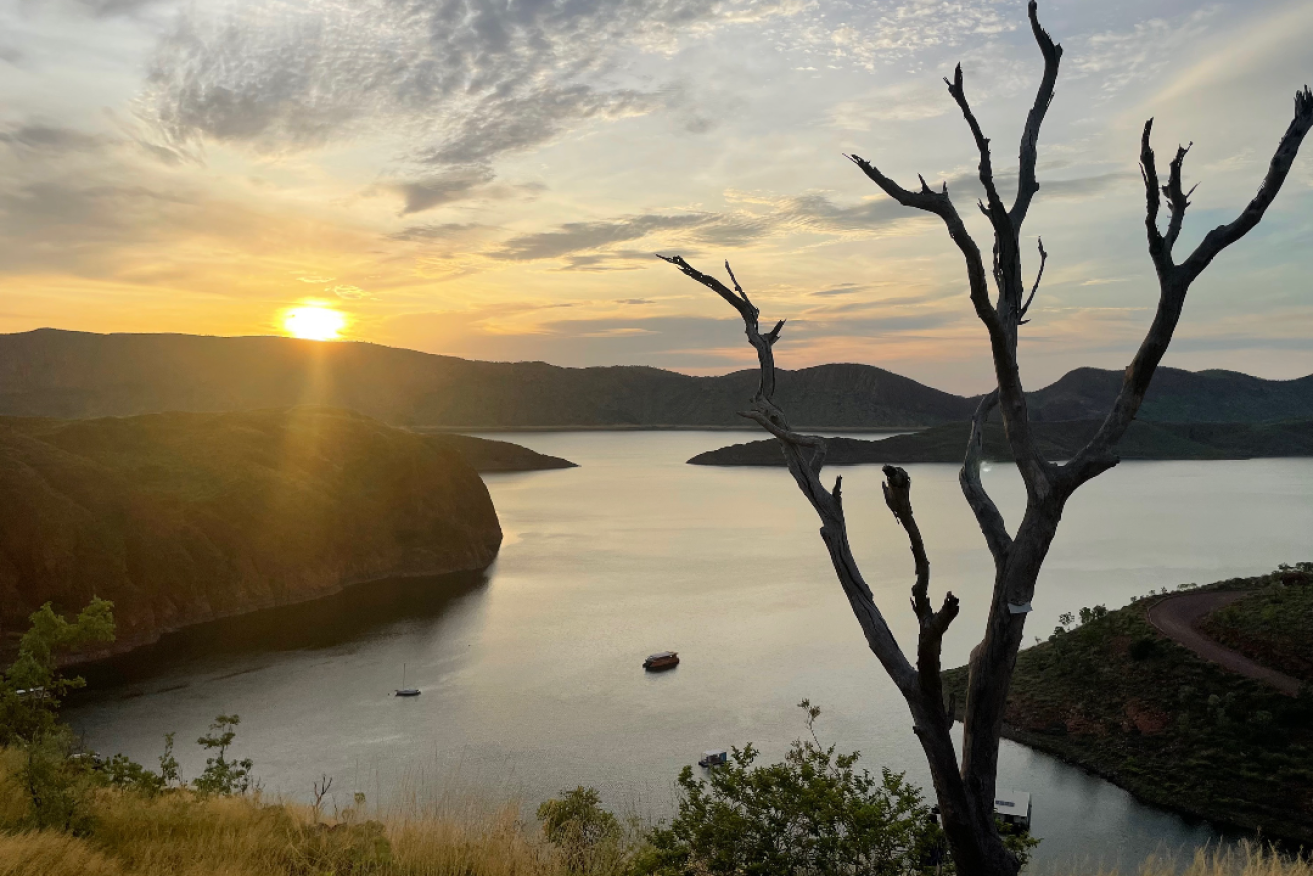WA hydrogen project is almost four times larger than Whyalla’s
The federal government will contribute $1.7 million towards a feasibility study for a newly announced hydrogen project in Western Australia which dwarfs what’s proposed for the Upper Spencer Gulf in SA.


Lake Argyle in East Kimberly, Western Australia. AAP Image: Supplied by Pollination.
Announced today, the Australian Renewable Energy Agency will put $1.7 million into the first phase of a five-month feasibility study for a plan to export green hydrogen and ammonia to Asia from production facilities in WA’s Kimberly region.
The project would see an East Kimberly clean energy hub created, comprising Australia’s largest solar farm at 1000 megawatts of generation paired with 850MW of electrolysis capacity to produce 50,000 tonnes of green hydrogen per year.
The hydrogen would be piped underground to the north-western coast, with existing Ord River hydropower and water from Lake Argyle used to produce around 250,000 tonnes per annum of renewable ammonia for export.
The Ord hydro plant was built to power the now-closed Argyle diamond mine as well as the nearby towns of Wyndham and Kununurra.
Under the proposal from the Aboriginal Clean Energy Partnership, shipments from Wyndham Port would go to key trading partners in Asia as well as being available as a feedstock for making fertilisers for domestic agriculture and explosives for mining.
The agency said the project would create one of the world’s largest renewable hydrogen and ammonia production facilities, with an estimated capital cost of $2.7-3.2 billion.
The proposed hub dwarfs that planned for Whyalla, where the state government plans to build a 250MWe hydrogen electrolyser, a 200MW combined cycle gas turbine generator and 3600-tonne hydrogen storage facility.
Unveiled in 2022 as “one of the world’s largest” according to the state government, the $600 million Hydrogen Jobs Plan and hydrogen power plant was dubbed “a new source of flexible power, providing additional grid stability for homes and businesses around the state by utilising excess renewable energy generated from large-scale wind and solar farms to provide a consistent output of supply”.
ATCO Australia and BOC were appointed in October last year to deliver the Whyalla project, as well as South Australian energy infrastructure company EPIC which will build an integrated pipeline and storage solution for the Upper Spencer Gulf site.
In September last year, the state and federal governments announced they would jointly spend $100 million on infrastructure at the planned Port Bonython Hydrogen Hub.
Today, Aboriginal Clean Energy Partnership chief executive Darren Miller said the WA project would also demonstrate how First Nations groups can have a greater say and a larger stake in Australia’s renewable energy.
In what he called a world-first business model, traditional owners are shareholders and not merely stakeholders in the joint venture.
Native title representative holders Yawoorroong Miriuwung Gajerrong Yirrgeb Noong Dawang Corporation, Balanggarra, Kimberley Land Council Aboriginal Corporation and climate investment firm Pollination formed the partnership two years ago – each with a quarter share.
“The old ways of making energy and of doing development have often not been good for First Nations people,” one of the partners, Balanggarra Ventures, said.
“We know there is a better way to do this and we are excited to be leading it.”
– With AAP




